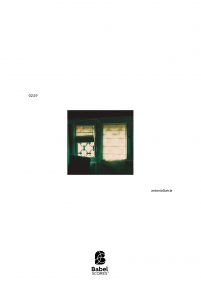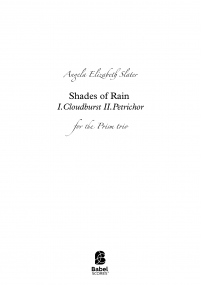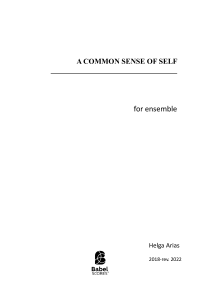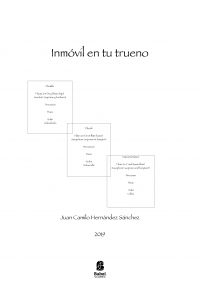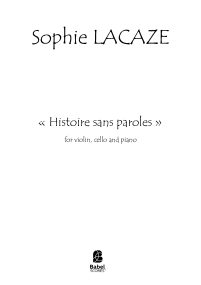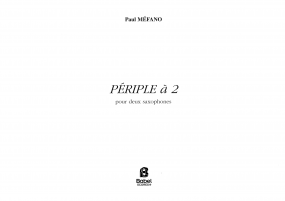Blossoms in the Dead of Winter
for piano trio
9,27 €
Version numérique (+0,00 €) à télécharger
Version papier (+14,80 € impression et livraison ). Colissimo7-14 days aprox.
Chez BabelScores, quand vous achetez une partition, vous pouvez ensuite contacter directement le compositeur ici même !
Caractéristiques
Region
North America (Canada - USA)
Estimated Duration
6 - 10min
Date
2017
ISMN : 979-0-2325-4678-0
Vidéos
Notes sur cette pièce
Ajouter à une playlist
- Identifiez-vous pour créer une liste
Blossoms in the Dead of Winter is inspired by the imagery found in a scene from the 2005 anime series, Mushishi, where an enclave of spring opens up in the heart of a blizzard. The wanderer in the mountains finds refuge in this oasis of life while enveloped by the desolation of the winter storm. Is this miraculous presence grounded in reality, or is it a mirage induced by his intense longing for warmth? This juxtaposition of polar opposites produces a surrealistic effect.
The second theme quotes from the Japanese folk song “Sakura, Sakura.” Its text describes cherry blossoms blown around by the wind as far as the eye can see. It poses the question, “Is it mist, or clouds?” Seen from afar, these blossoms impress on the viewer a concept of an entirely different entity. This ambiguity of form derived from a spontaneous conception that the viewer constructs of the scene before him links the subject of the folk song with an impressionistic mode of visualization. The pitch content of the song further bolsters this idea, as it is derived from the Japanese mode, a variant of the pentatonic scale. The melody, which outlines a tritone, implies harmonies such as the half-diminished seventh chord and otherwise evokes a sense of tonal ambiguity. The incorporation of this melody into the piano trio thus brings with it harmonic and timbral implications.
The melodies constantly shift between distant modes, and their harmonization only exacerbates this instability. Accompanying whole tone and octatonic scales color these modal lines. The first section of the piece presents the initial melodic idea which represents a subdued, wintry character. Throughout this section, the initial fragment of the Sakura melody repeatedly appears in the left hand of the piano part before the first full presentation occurs in the bassline. The character intensifies like a brewing storm, and the Sakura melody appears a second time but in syncopation, almost as if the whirlwind of icy particles called cherry blossoms to mind. The middle section dominated by a clear melody in the violin provides a short-lived respite from the storm. The next section contains the most complete and extensive presentation of the “Sakura” melody, signifying the arrival at the oasis of spring; however, the sinuous sixteenth notes weaving through the uneven meter of the violin line keeps this from becoming a resting place. The turbulent character gradually creeps in, culminating in the most tumultuous and contrapuntally dense area of the piece. This extroverted outburst is subsequently reduced to a more contained expression that maintains the tension despite its subdued character. The material from the opening section returns before the piece draws to a close in a flurry of activity, leaving the traveler’s fate uncertain.
Instrumentation
Piano|Violin|Cello
Score Details
Format - A4 / US Letter
Pages - 24
Pages - 24
Customers Who Viewed This Piece Also Viewed:





